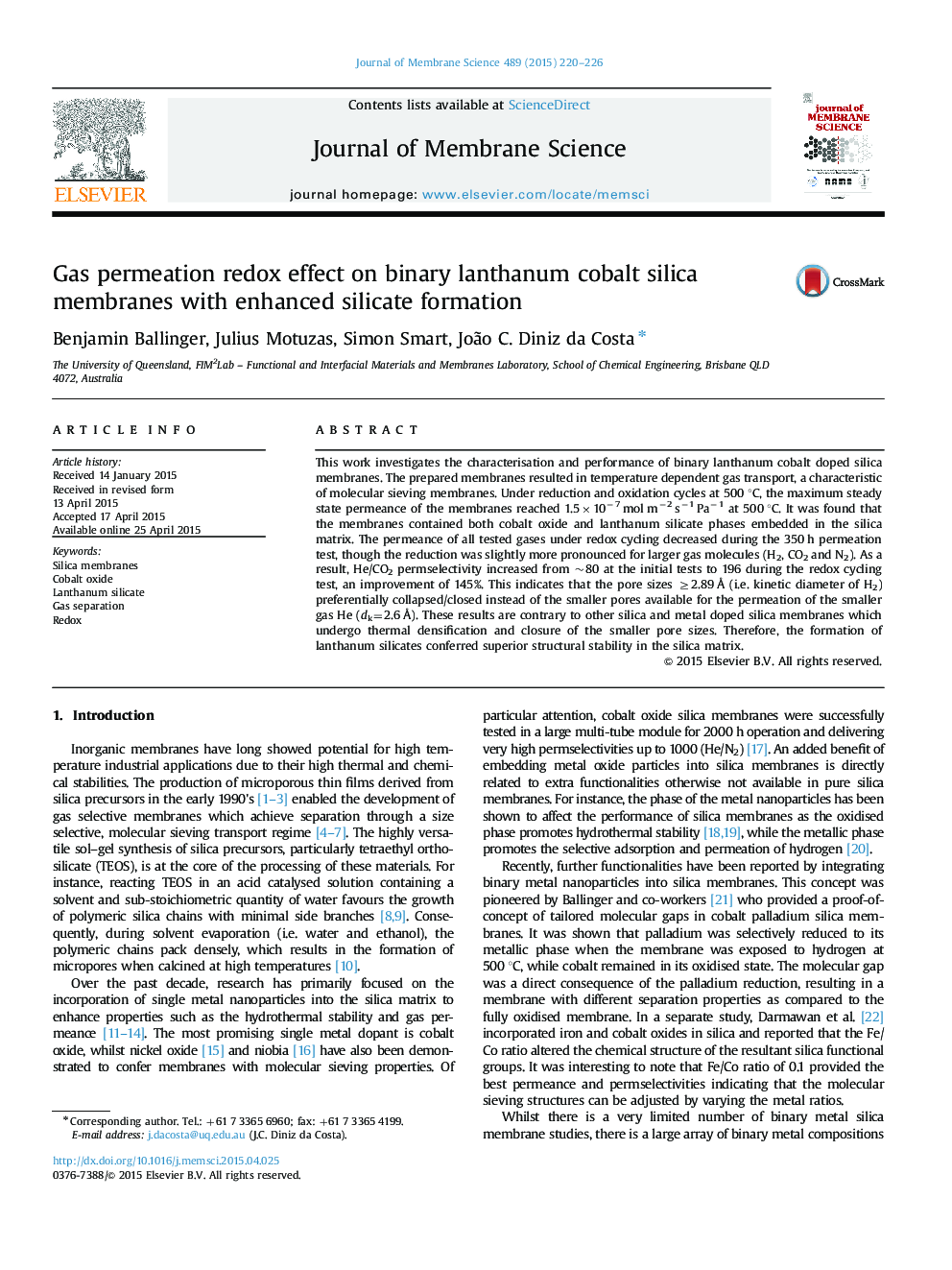| Article ID | Journal | Published Year | Pages | File Type |
|---|---|---|---|---|
| 632907 | Journal of Membrane Science | 2015 | 7 Pages |
•Temperature activated transport via binary LaCo oxide silica membranes.•Gas permeation redox cycles tested over 350 h at 500 °C.•He/CO2 permselectivity increased from 80 to 196 during redox cycling.•La-silicate phase enhanced by 50% with addition of Co oxide.•Micropore thermal stability in the membrane at 500 °C conferred by La-silicates.
This work investigates the characterisation and performance of binary lanthanum cobalt doped silica membranes. The prepared membranes resulted in temperature dependent gas transport, a characteristic of molecular sieving membranes. Under reduction and oxidation cycles at 500 °C, the maximum steady state permeance of the membranes reached 1.5×10−7 mol m−2 s−1 Pa−1 at 500 °C. It was found that the membranes contained both cobalt oxide and lanthanum silicate phases embedded in the silica matrix. The permeance of all tested gases under redox cycling decreased during the 350 h permeation test, though the reduction was slightly more pronounced for larger gas molecules (H2, CO2 and N2). As a result, He/CO2 permselectivity increased from ~80 at the initial tests to 196 during the redox cycling test, an improvement of 145%. This indicates that the pore sizes ≥2.89 Å (i.e. kinetic diameter of H2) preferentially collapsed/closed instead of the smaller pores available for the permeation of the smaller gas He (dk=2.6 Å). These results are contrary to other silica and metal doped silica membranes which undergo thermal densification and closure of the smaller pore sizes. Therefore, the formation of lanthanum silicates conferred superior structural stability in the silica matrix.
Graphical abstractFigure optionsDownload full-size imageDownload high-quality image (283 K)Download as PowerPoint slide
